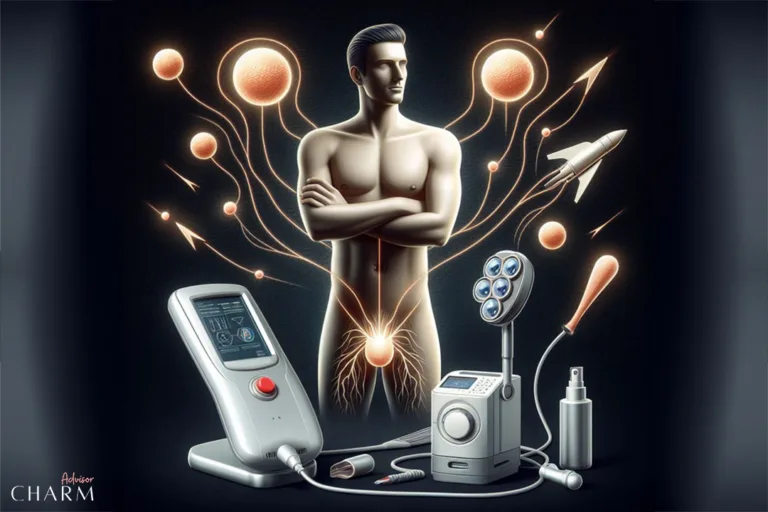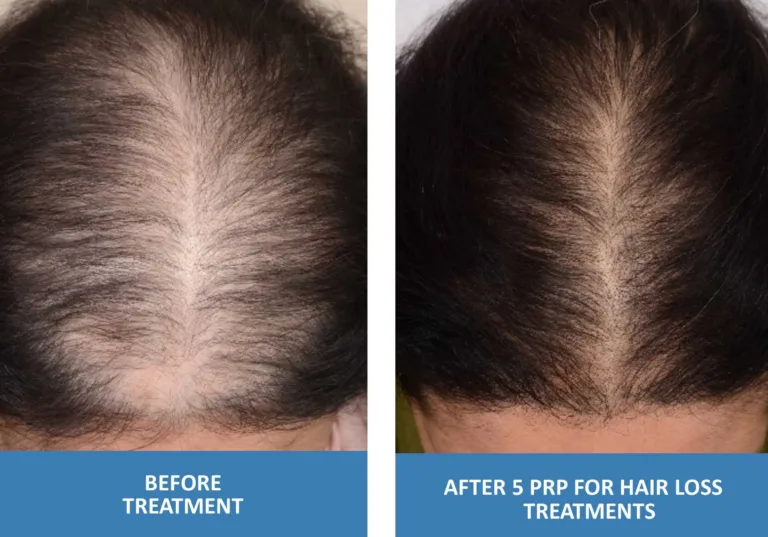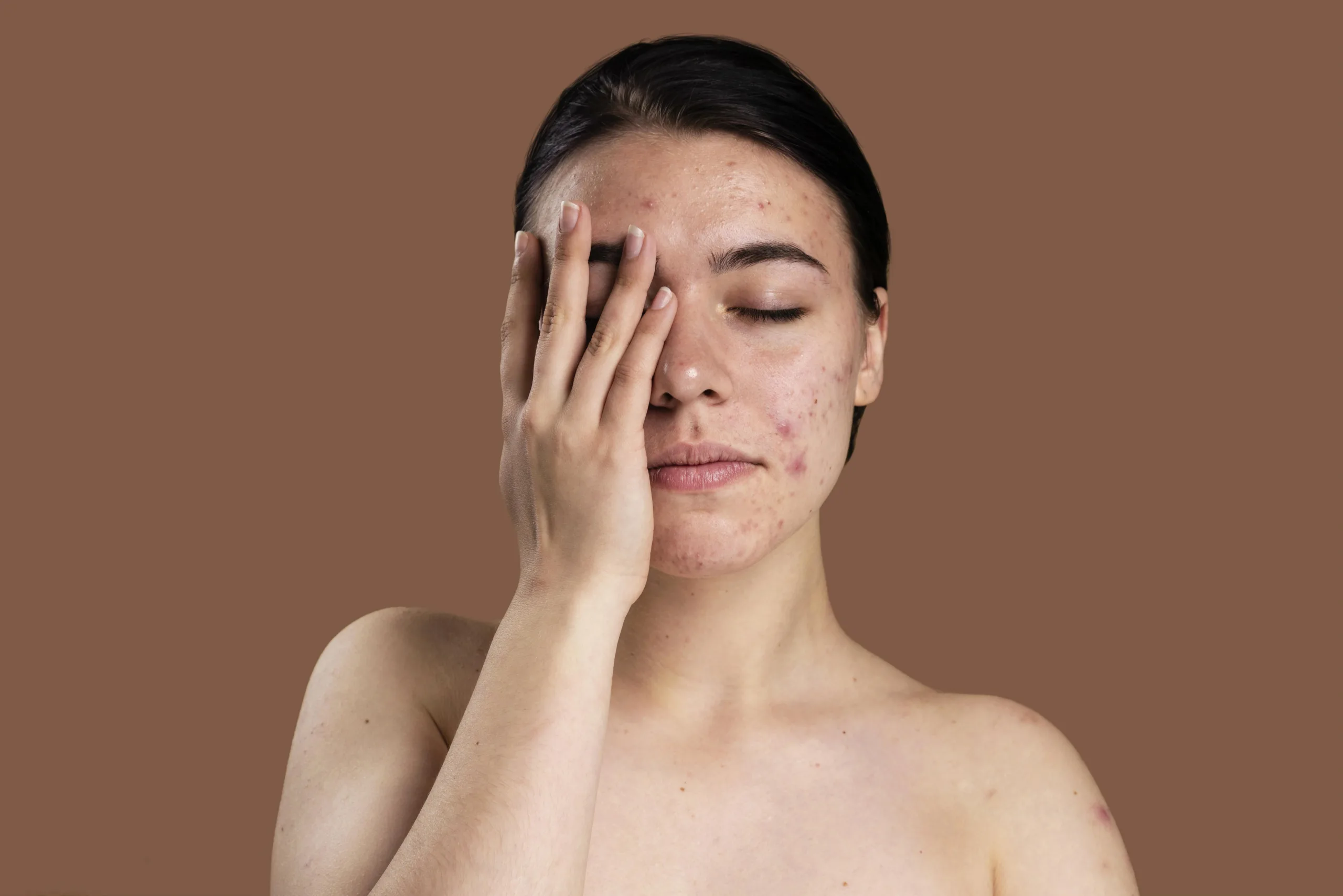
Introduction
Plasma for Acne Scars: A Solution for Frustrating Skin Imperfections
Plasma therapy, specifically platelet-rich plasma (PRP) therapy, offers a promising solution for individuals burdened by the presence of acne scars. These scars often lead to feelings of frustration and self-consciousness. However, with advancements in medical aesthetics, innovative treatments like plasma therapy have emerged to effectively reduce the appearance of acne scars and promote skin rejuvenation. In this article, we will delve into the transformative power of plasma therapy in addressing acne scars and restoring confidence in one’s skin.
Understanding Acne Scars:
Acne scars are the visible marks that remain on the skin after acne lesions have healed. They can vary in appearance and severity, depending on the type and extent of the acne breakout. Understanding the different types of acne scars can help determine the most suitable treatment approach.
1.1 Types of Acne Scars:
1.1.1 Atrophic Scars:
Atrophic scars are characterized by depressed or sunken areas on the skin. These scars result from a loss of tissue during the healing process. Atrophic scars can be further classified into:
- Boxcar Scars: These scars have broad, box-like depressions with defined edges.
- Icepick Scars: Icepick scars are deep, narrow scars that resemble small puncture marks on the skin.
- Rolling Scars: Rolling scars create a wave-like appearance on the skin’s surface and are caused by fibrous bands pulling the skin downward.
1.1.2 Hypertrophic Scars:
Hypertrophic scars are raised and thickened scars that occur due to an overproduction of collagen during the healing process. Unlike keloid scars, which extend beyond the boundaries of the initial injury, hypertrophic scars remain within the boundaries of the original wound.
1.2 Causes of Acne Scars:
Acne scars develop when the skin’s healing process is disrupted. Factors that can contribute to the formation of acne scars include:
- Inflammatory acne: Acne that is severe and inflamed, such as cystic acne, is more likely to result in scarring.
- Picking or popping pimples: Squeezing or picking at acne lesions can damage the skin and increase the risk of scarring.
- Delayed or inadequate treatment: Not seeking appropriate treatment for acne in a timely manner can lead to more severe breakouts and an increased likelihood of scarring.
1.3 Challenges in Treating Acne Scars:
Treating acne scars can be challenging due to their varying types and depths. Some scars may respond well to certain treatments, while others may require a combination of approaches. Additionally, the presence of active acne can affect the choice and timing of treatments, as addressing the underlying acne is crucial for successful scar treatment.
It is essential to consult with a dermatologist or skincare professional who specializes in treating acne scars. They can assess the type and severity of your scars and recommend an appropriate treatment plan tailored to your specific needs. By understanding the nature of your acne scars, you can make informed decisions about the best course of action to achieve smoother, more even-toned skin.

2. Plasma Therapy for Acne Scars:
Plasma for Acne scars, specifically platelet-rich plasma (PRP) therapy, is gaining recognition as a promising treatment option for acne scars. PRP therapy utilizes the healing properties of a patient’s own blood to promote skin rejuvenation and improve the appearance of scars. Let’s explore the details of how plasma therapy can effectively address acne scars.
2.1 What is Platelet-Rich Plasma (PRP) Therapy?
Platelet-rich plasma (PRP) therapy is a procedure that involves extracting a small amount of the patient’s blood and processing it to concentrate the platelets and growth factors. These platelets contain proteins and cytokines that play a vital role in tissue regeneration and wound healing. When applied to the skin, PRP stimulates the body’s natural healing process and collagen production, resulting in improved skin texture and reduced scarring.
2.2 How Does Plasma Therapy Work for Acne Scars?
Plasma therapy for acne scars harnesses the regenerative properties of PRP to target and minimize the appearance of scars. The procedure typically involves the following steps:
2.2.1 Blood Collection:
A small sample of the patient’s blood is drawn, usually from the arm, using a sterile needle and syringe.
2.2.2 Plasma Separation:
The collected blood is then placed in a centrifuge machine, where it is spun at high speed to separate the plasma from the red blood cells.
2.2.3 Concentration of Platelets:
After separation, the plasma with a high concentration of platelets is extracted, leaving behind the platelet-rich plasma ready for application.
2.2.4 Application of PRP:
The PRP is applied topically or injected into the skin, specifically targeting the areas affected by acne scars. The growth factors and proteins in the PRP stimulate cell regeneration, collagen synthesis, and tissue repair, ultimately reducing the appearance of scars.
2.3 Benefits of Plasma Therapy for Acne Scars:
Plasma therapy offers several advantages as a treatment for acne scars:
2.3.1 Natural Healing Process:
Since PRP is derived from the patient’s own blood, it is a natural and biocompatible treatment. The body recognizes PRP as a natural healing agent, reducing the risk of adverse reactions.
2.3.2 Stimulates Collagen Production:
Collagen is a crucial protein that provides structural support to the skin. PRP therapy stimulates collagen synthesis, improving the skin’s elasticity and texture over time.
2.3.3 Minimally Invasive Procedure:
Plasma therapy for acne scars is a minimally invasive procedure that can be performed in a dermatologist’s office. It typically involves little to no downtime, allowing patients to resume their regular activities shortly after treatment.
2.3.4 Customizable Treatment:
PRP therapy can be tailored to suit the individual needs of each patient. The concentration of platelets and the method of application can be adjusted based on the severity and type of acne scars.
2.4 Results and Considerations:
While plasma therapy can yield positive results for many individuals with acne scars, it’s important to note that individual responses may vary. The effectiveness of the treatment depends on various factors, such as the type and severity of the scars, the patient’s overall skin condition, and their ability to produce collagen.
Multiple sessions of plasma therapy may be recommended to achieve optimal results. Over time, patients may notice a reduction in the visibility of their acne scars, improved skin texture, and a more even complexion. It is crucial to follow the aftercare instructions provided by the dermatologist and maintain a consistent skincare routine to support the healing process and enhance the outcomes.
In conclusion, plasma therapy, specifically platelet-rich plasma (PRP) therapy, is a promising treatment option for individuals
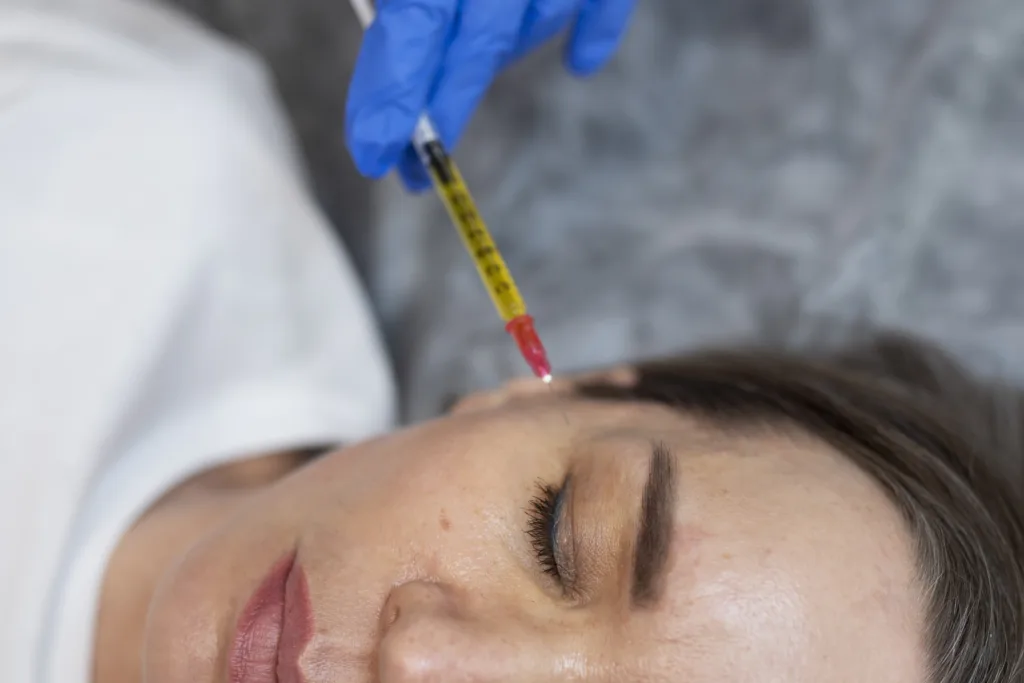
Understanding Plasma Therapy for Acne Scars
Plasma therapy, including platelet-rich plasma (PRP) therapy, has shown promise in addressing acne scars. By harnessing the regenerative properties of plasma, this innovative treatment can help improve the appearance of acne scars and promote skin rejuvenation. Let’s delve into the details of how plasma therapy can effectively target acne scars.
3.1 What is Plasma Therapy for Acne Scars?
Plasma therapy involves using platelet-rich plasma (PRP) to promote the healing and regeneration of damaged skin tissue. PRP is derived from the patient’s own blood and contains a concentrated amount of platelets and growth factors. When applied to acne scars, PRP triggers the body’s natural healing process, stimulating collagen production, and reducing the visibility of scars.
3.2 How Does Plasma Therapy Work for Acne Scars?
Plasma therapy for acne scars follows a comprehensive process that includes the following steps:
3.2.1 Blood Collection:
A small sample of the patient’s blood is collected, typically from the arm, using a sterile needle and syringe.
3.2.2 Plasma Separation:
The collected blood is placed in a centrifuge, a machine that spins the blood at high speeds. This spinning separates the plasma, which contains a higher concentration of platelets, from the other blood components.

3.2.3 Concentration of Platelets:
Once the plasma is separated, it is carefully extracted, leaving behind the platelet-rich plasma. This concentrated plasma contains growth factors and proteins essential for tissue regeneration.
3.2.4 Application of PRP:
The PRP is then applied to the acne scars using different methods, such as injection or topical application. The growth factors and proteins in PRP stimulate collagen synthesis, improve blood flow, and encourage the regeneration of healthy skin cells. Over time, this helps reduce the appearance of acne scars and enhances the overall texture and tone of the skin.
3.3 Benefits of Plasma Therapy for Acne Scars:
Plasma therapy offers several benefits as a treatment for acne scars:
3.3.1 Natural and Safe:
Since PRP is derived from the patient’s own blood, there is minimal risk of adverse reactions or allergies. It is a safe and biocompatible treatment option.
3.3.2 Stimulates Collagen Production:
Collagen is a vital component of healthy skin, responsible for its strength and elasticity. Plasma therapy triggers collagen production, which helps repair and rebuild the damaged skin tissue, ultimately reducing the appearance of acne scars.
3.3.3 Minimally Invasive:
Plasma therapy is a minimally invasive procedure that can be performed in a dermatologist’s office. It generally requires minimal downtime, allowing patients to resume their daily activities soon after treatment.
3.3.4 Personalized Treatment:
Plasma therapy can be customized to meet the unique needs of each patient. The concentration of platelets and the mode of application can be adjusted based on the severity and type of acne scars, ensuring a tailored treatment approach.
3.4 Results and Considerations:
The efficacy of plasma therapy for acne scars varies from person to person. Factors such as the type and severity of the scars, overall skin condition, and individual healing capabilities influence the outcomes. Multiple treatment sessions may be required to achieve significant improvements.
Patients undergoing plasma therapy can expect gradual improvements in the appearance of their acne scars over time. The skin may become smoother, more even-toned, and have a rejuvenated appearance. It is important to adhere to the aftercare instructions provided by the dermatologist and maintain a proper skincare routine to optimize the results.
In conclusion, plasma therapy, particularly platelet-rich plasma (PRP) therapy, offers a promising solution for individuals seeking to address acne scars. By utilizing the
Potential Side Effects and Considerations of Plasma Therapy for Acne Scars
While plasma therapy for acne scars is generally considered safe and well-tolerated, it’s essential to be aware of potential side effects and considerations associated with the treatment. Understanding these aspects can help individuals make informed decisions and manage expectations regarding plasma therapy. Let’s explore the details of the potential side effects and important considerations associated with plasma therapy for acne scars.
4.1 Possible Side Effects:
Plasma therapy is a minimally invasive procedure, and the risk of severe complications is relatively low. However, individuals undergoing this treatment should be aware of the following potential side effects:
4.1.1 Discomfort and Pain:
During the treatment, individuals may experience mild discomfort or pain at the injection site or the area of topical application. This sensation is usually temporary and subsides shortly after the procedure.
4.1.2 Bruising and Swelling:
Some individuals may develop temporary bruising or swelling at the treatment site. These effects are generally mild and resolve on their own within a few days.
4.1.3 Redness and Skin Sensitivity:
After plasma therapy, the treated area may appear slightly red or exhibit increased sensitivity. This is a normal reaction and typically fades within a few days to a week.
4.1.4 Infection or Allergic Reaction:
While rare, there is a minimal risk of infection or allergic reaction associated with plasma therapy. It is crucial to choose a qualified and experienced healthcare professional to minimize these risks.
4.2 Important Considerations:
Before undergoing plasma therapy for acne scars, individuals should take the following considerations into account:
4.2.1 Treatment Expectations:
Plasma therapy offers gradual improvements in the appearance of acne scars over time. It is essential to have realistic expectations and understand that multiple treatment sessions may be necessary to achieve significant results.
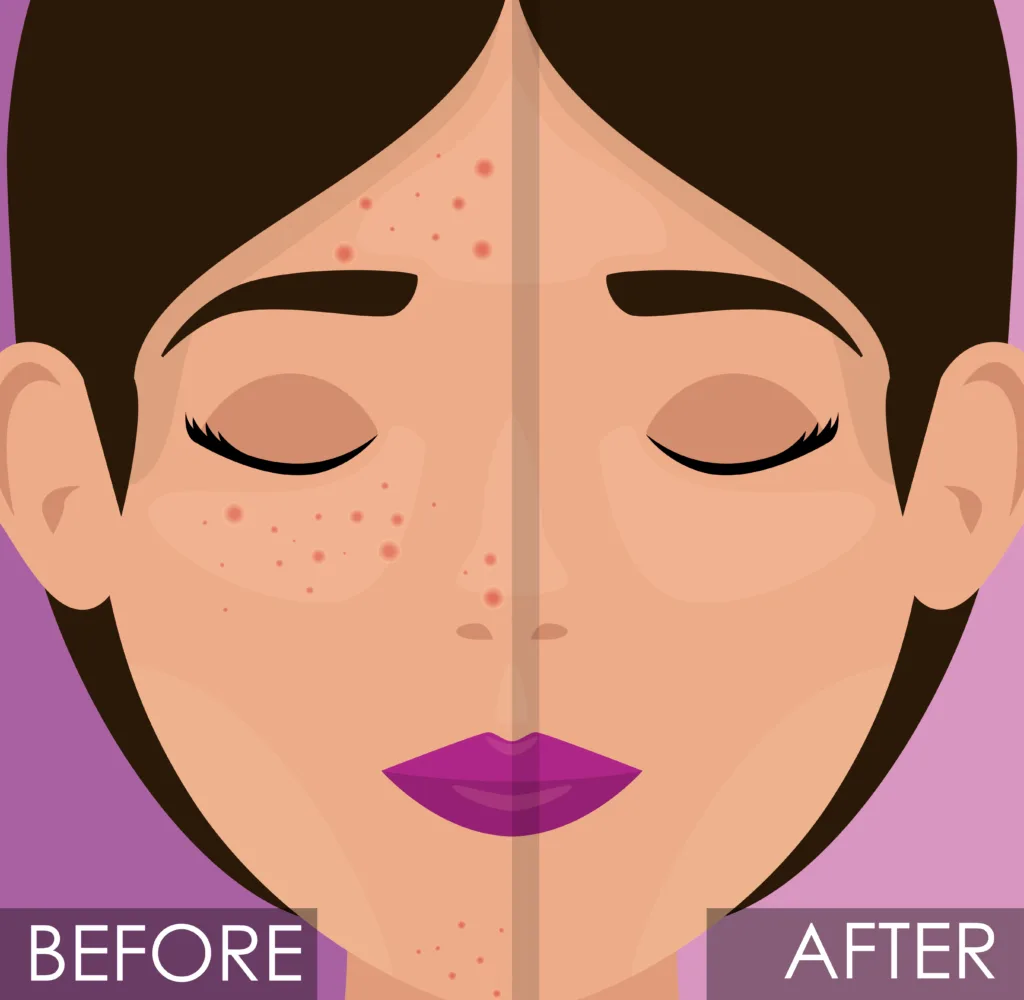
4.2.2 Individual Response:
The effectiveness of plasma therapy can vary from person to person. Factors such as the type and severity of acne scars, skin condition, and individual healing capabilities can influence the outcomes. Patience and consistent treatment are key to achieving the desired results.
4.2.3 Pre-existing Conditions:
Individuals with certain medical conditions, such as bleeding disorders or autoimmune diseases, may not be suitable candidates for plasma therapy. It is crucial to discuss any pre-existing conditions or concerns with a healthcare professional before undergoing the treatment.
4.2.4 Downtime and Aftercare:
Plasma therapy for acne scars typically involves minimal downtime. However, it is important to follow the aftercare instructions provided by the healthcare professional. This may include avoiding excessive sun exposure, using recommended skincare products, and maintaining a healthy lifestyle to support the healing process.
4.2.5 Cost Considerations:
Plasma therapy for acne scars may require multiple treatment sessions, and the cost can vary depending on various factors. It is advisable to discuss the treatment cost and potential insurance coverage with the healthcare provider beforehand.
4.3 Consultation with a Healthcare Professional:
Before undergoing plasma therapy for acne scars, it is crucial to consult with a qualified healthcare professional, such as a dermatologist or a cosmetic surgeon. They can assess individual suitability, discuss treatment options, address concerns, and provide personalized recommendations based on the specific needs and goals of the patient.
In summary, while plasma therapy for acne scars is generally safe and well-tolerated, individuals should be aware of potential side effects and important considerations. By understanding these aspects and consulting with a healthcare professional, individuals can make informed decisions and achieve optimal results from plasma therapy.
Effectiveness of Plasma Therapy for Acne Scars and Promoting Healing After Surgery
Plasma therapy, also known as platelet-rich plasma (PRP) therapy, has shown promising results in treating acne scars and promoting healing after surgery. This innovative treatment utilizes the regenerative properties of platelets to stimulate tissue repair and rejuvenation. Let’s delve into the in-depth details of how plasma therapy can be effective in addressing acne scars and aiding the healing process after surgery.
5.1 Treating Acne Scars:
Acne scars can be a distressing cosmetic concern for many individuals. Plasma therapy offers a non-surgical approach to minimize the appearance of acne scars and improve skin texture. Here’s how it works:
5.1.1 Stimulating Collagen Production:
Plasma therapy involves extracting a small amount of the patient’s blood and centrifuging it to separate the platelet-rich plasma from other components. The platelet-rich plasma is then injected into the targeted areas of the skin affected by acne scars. The platelets release growth factors that stimulate collagen production, a crucial protein responsible for skin elasticity and structure. Increased collagen production helps in filling and smoothing out the depressions caused by acne scars, leading to improved skin texture over time.
5.1.2 Enhancing Tissue Regeneration:
The growth factors present in platelet-rich plasma also aid in tissue regeneration. They promote the formation of new blood vessels and accelerate the healing process in the treated areas. As a result, damaged skin is replaced with healthier tissue, reducing the visibility of acne scars.
5.1.3 Gradual and Cumulative Results:
Plasma therapy for acne scars typically involves a series of treatment sessions spaced several weeks apart. The gradual nature of the treatment allows the skin to regenerate naturally, and results become more noticeable with each session. While individual responses may vary, many individuals experience a reduction in the depth and visibility of acne scars, leading to smoother and more even-toned skin.
5.2 Promoting Healing After Surgery:
In addition to its effectiveness in treating acne scars, plasma therapy has been utilized to promote healing and tissue regeneration after surgery. Here’s how plasma therapy can aid the healing process:
5.2.1 Boosting Cell Growth and Repair:
Plasma therapy delivers concentrated growth factors directly to the surgical site, which can expedite the healing process. The growth factors stimulate cell growth, increase blood supply, and enhance the production of collagen and other essential proteins necessary for tissue repair. This can lead to faster wound healing, reduced scarring, and improved overall surgical outcomes.
5.2.2 Supporting Tendon and Muscle Healing:
Plasma therapy has been used to assist in the recovery of tendon injuries and chronic tendon problems such as tennis elbow, tendonitis, and jumpers knee. By injecting platelet-rich plasma into the affected area, the growth factors can help promote the healing of damaged tendons and muscles, reducing pain and improving functionality.
5.2.3 Accelerating Recovery After Orthopedic Surgeries:
Plasma therapy has demonstrated its potential in promoting healing and reducing recovery time after orthopedic surgeries. Whether it’s shoulder surgery or ACL reparative surgery, the injection of platelet-rich plasma can aid in the regeneration of damaged tissues, minimize inflammation, and improve joint function.
5.2.4 Personalized Treatment Approach:
The application of plasma therapy for surgical healing is tailored to each patient’s specific needs. The healthcare professional assesses the surgical site, the patient’s overall health, and the desired outcome to determine the optimal treatment protocol. This personalized approach ensures that the therapy is targeted and maximizes its potential benefits.
In conclusion, plasma therapy has shown effectiveness in treating acne scars by stimulating collagen production, promoting tissue regeneration, and gradually reducing the visibility of scars. Additionally, plasma therapy has
been utilized to aid healing after surgery, enhancing wound healing, reducing scarring, and supporting tissue repair. By harnessing the regenerative properties of platelet-rich plasma, individuals can experience improved skin texture and enhanced healing outcomes. It is advisable to consult with a qualified healthcare professional to determine if plasma therapy is a suitable option for specific acne scar treatment or post-surgical healing needs.
Safety and Considerations of Plasma Therapy for Acne Scars
When considering any medical procedure, it is essential to understand the safety aspects and considerations associated with the treatment. Plasma therapy, commonly known as platelet-rich plasma (PRP) therapy, has gained recognition for its potential in treating acne scars. Let’s explore in-depth details about the safety profile and considerations of plasma therapy for acne scars.
6.1 Safety Profile:
Plasma therapy for acne scars is generally considered safe and well-tolerated. Since the treatment utilizes the patient’s own blood components, the risk of allergic reactions or adverse immune responses is minimal. The procedure is non-surgical, minimally invasive, and performed in a controlled medical environment by trained professionals, further ensuring safety.
6.2 Patient Suitability:
While plasma therapy is generally safe, certain factors may affect an individual’s suitability for the procedure. It is important to consider the following:
6.2.1 Medical History Assessment:
Before undergoing plasma therapy, a comprehensive medical history assessment is conducted to identify any underlying conditions or medications that could potentially interfere with the treatment. Individuals with bleeding disorders, blood-related conditions, or taking blood-thinning medications may require careful evaluation and consultation with a healthcare professional.
6.2.2 Skin Sensitivity and Allergies:
Individuals with known allergies or sensitivities should inform their healthcare provider before undergoing plasma therapy. Although the risk of adverse reactions is minimal due to the use of the patient’s own blood components, it is crucial to disclose any allergies or sensitivities to ensure a safe and tailored treatment approach.
6.2.3 Pregnancy and Breastfeeding:
As a precautionary measure, plasma therapy is typically avoided during pregnancy and breastfeeding. While there is limited research on the specific effects of plasma therapy in these situations, it is advisable to consult with a healthcare professional for personalized guidance.
6.3 Potential Side Effects:
Plasma therapy is generally well-tolerated, but like any medical procedure, it may involve some potential side effects. These side effects are typically mild and transient, resolving on their own. They may include:
6.3.1 Discomfort or Pain:
Some individuals may experience mild discomfort or pain at the injection sites. This can be managed with over-the-counter pain relievers or as recommended by the healthcare provider.
6.3.2 Swelling and Bruising:
Temporary swelling and bruising at the injection sites are common side effects of plasma therapy. These effects usually subside within a few days to a week.
6.3.3 Infection and Injury:
While rare, there is a minimal risk of infection or injury at the injection sites. To mitigate this risk, it is important to receive plasma therapy from a qualified healthcare professional in a sterile environment.
6.4 Treatment Plan and Expectations:
To achieve optimal results and minimize potential risks, it is crucial to follow a well-defined treatment plan and set realistic expectations. Here are some considerations:
6.4.1 Treatment Duration and Frequency:
Plasma therapy for acne scars typically involves multiple treatment sessions scheduled several weeks apart. The exact number of sessions and treatment frequency will depend on the individual’s specific needs, severity of acne scars, and the healthcare provider’s assessment.
6.4.2 Gradual Improvement and Patience:
Plasma therapy stimulates natural tissue regeneration, and as such, results may be gradual and require patience. It is important to understand that visible improvements in acne scars may take time, with optimal results becoming more apparent over several months.
6.4.3 Complementary Treatments:
In some cases, combining plasma therapy with other cosmetic procedures or skincare treatments may enhance the overall outcomes. Your healthcare provider can advise on suitable complementary treatments, if necessary.
In summary, plasma therapy for acne scars offers a safe and well-tolerated treatment option.
Consultation and Choosing a Qualified Provider for Plasma Therapy
When considering plasma therapy for acne scars, it is crucial to undergo a consultation with a qualified healthcare professional. This ensures that you receive the most appropriate treatment and achieve optimal results. Let’s delve into the in-depth details of the consultation process and the importance of choosing a qualified provider for plasma therapy.
7.1 Initial Consultation:
The initial consultation is a vital step in the plasma therapy journey. During this consultation, the healthcare provider will evaluate your skin condition, assess the severity of your acne scars, and discuss your treatment goals and expectations. The consultation typically involves the following aspects:
7.1.1 Medical History Assessment:
The healthcare provider will review your medical history to identify any underlying health conditions, allergies, or medications that may impact the suitability or effectiveness of plasma therapy. It is important to provide comprehensive and accurate information to ensure safe and tailored treatment.
7.1.2 Skin Assessment:
The provider will examine your skin, specifically focusing on the acne scars and the overall skin condition. This evaluation helps determine the most suitable treatment approach and realistic expectations for improvement.
7.1.3 Discussion of Treatment Options:
Based on the assessment, the healthcare provider will explain the available treatment options, including plasma therapy and any complementary procedures or skincare treatments that may enhance the results. They will discuss the benefits, potential risks, and expected outcomes of each option.
7.1.4 Customized Treatment Plan:
Following the discussion of treatment options, the provider will develop a customized treatment plan tailored to your specific needs and goals. This plan will outline the recommended number of sessions, treatment intervals, and any necessary preparation or post-treatment care instructions.
7.2 Choosing a Qualified Provider:
Selecting a qualified and experienced healthcare professional for plasma therapy is crucial to ensure safe and effective treatment. Consider the following factors when choosing a provider:
7.2.1 Credentials and Expertise:
Research the qualifications, certifications, and experience of the healthcare provider offering plasma therapy. Look for specialists in dermatology, cosmetic dermatology, or aesthetic medicine who have a thorough understanding of skin conditions and advanced treatment techniques.
7.2.2 Reputation and Reviews:
Read patient reviews, testimonials, and feedback about the provider and their clinic. This can provide insights into the quality of care, patient satisfaction, and the provider’s expertise in performing plasma therapy for acne scars.
7.2.3 Facilities and Safety Standards:
Visit the clinic or treatment facility beforehand to assess its cleanliness, professionalism, and adherence to safety protocols. Ensure that the clinic follows proper sterilization procedures and maintains a safe and comfortable environment for patients.
7.2.4 Communication and Trust:
A qualified provider will prioritize clear communication, actively listen to your concerns, and address any questions or doubts you may have. They should establish trust and make you feel comfortable throughout the treatment process.
7.2.5 Before-and-After Photos:
Ask the provider to show you before-and-after photos of previous patients who have undergone plasma therapy for acne scars. This can give you an idea of the provider’s skill and the potential results you can expect.
7.2.6 Cost and Insurance Coverage:
Discuss the cost of plasma therapy and any potential insurance coverage with the provider or their staff. Ensure that you have a clear understanding of the financial aspects before proceeding with the treatment.
By carefully considering these factors and conducting thorough research, you can choose a qualified provider who will guide you through the plasma therapy process and help you achieve your desired outcomes.
In conclusion, the consultation phase and choosing a qualified provider are essential steps when considering plasma therapy for acne scars. A knowledgeable and experienced healthcare professional will ensure personalized treatment and optimal results, providing you with the confidence and satisfaction you seek.
Conclusion
Plasma therapy, or PRP therapy, is a groundbreaking treatment option for individuals seeking to reduce the appearance of acne scars and rejuvenate their skin. By harnessing the natural healing properties of platelet-rich plasma, this non-invasive procedure stimulates collagen production and promotes tissue regeneration. With long-lasting results and minimal risk of complications, plasma therapy offers a promising solution for individuals looking to achieve smoother, more radiant skin. Consult with a qualified provider to determine if plasma therapy is the right option for you and embark on your journey towards acne scar improvement.
FAQs:
-
What is plasma therapy for acne scars?
Plasma therapy, also known as platelet-rich plasma (PRP) therapy, is a procedure that uses a patient’s own blood plasma to promote healing and rejuvenation of the skin. It can be an effective treatment for acne scars.
-
How does plasma therapy work for acne scars?
Plasma therapy works by injecting platelet-rich plasma into the affected areas of the skin. The platelets contain growth factors and proteins that stimulate the production of new collagen and promote tissue regeneration, leading to the improvement of acne scars.
-
Is plasma therapy safe for acne scars?
Yes, plasma therapy is generally considered safe for treating acne scars. Since it utilizes the patient’s own blood components, there is a minimal risk of adverse reactions or complications. However, it is essential to consult with a qualified healthcare professional for personalized advice.
-
How many plasma therapy sessions are needed to treat acne scars?
The number of plasma therapy sessions required to treat acne scars can vary depending on the severity of the scars and individual response to the treatment. Typically, multiple sessions spaced a few weeks apart may be recommended for optimal results.
-
Are the results of plasma therapy permanent?
While plasma therapy can significantly improve the appearance of acne scars, it does not guarantee permanent removal. Over time, the body’s natural healing processes and collagen production may gradually reduce the visibility of the scars. Maintenance treatments may be recommended to prolong the results.
-
Is plasma therapy painful?
Plasma therapy is generally well-tolerated, with minimal discomfort. Before the procedure, a topical anesthetic may be applied to the treatment area to numb the skin and minimize any potential pain or discomfort during the injections.
-
Are there any side effects or risks associated with plasma therapy for acne scars?
Plasma therapy is considered safe, with minimal side effects. However, some common temporary effects may include mild swelling, redness, or bruising at the injection sites. These usually subside within a few days. Serious complications are rare but can include infection or allergic reactions.
-
Can plasma therapy be combined with other acne scar treatments?
Yes, plasma therapy can be combined with other acne scar treatments, such as laser resurfacing or micro-needling, to enhance the results. The combination of treatments can address different aspects of scar improvement, providing a comprehensive approach.
-
Who is an ideal candidate for plasma therapy for acne scars?
Ideal candidates for plasma therapy are individuals with acne scars who are in good overall health. It is important to have realistic expectations and a willingness to undergo multiple treatment sessions. A consultation with a healthcare professional can determine if plasma therapy is suitable for an individual’s specific condition.
-
How long does it take to see results from plasma therapy for acne scars?
The results of plasma therapy for acne scars may vary among individuals. While some improvement may be noticeable after the first few sessions, significant results usually become more apparent over time as collagen production and skin rejuvenation progress. It may take several months to see the full benefits.
References:
- Platelet-Rich Plasma Augments Subcision in Atrophic Acne Scars: A Split-Face Comparative Study PubMed (nih.gov)
- Efficacy of platelet-rich plasma in acne scars (PDF) (researchgate.net)
- Platelet-rich plasma and its utility in the treatment of acne scars: A systematic PubMed (nih.gov)


